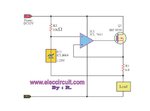- Joined
- Jan 22, 2008
- Messages
- 52,382
- Helped
- 14,746
- Reputation
- 29,774
- Reaction score
- 14,089
- Trophy points
- 1,393
- Location
- Bochum, Germany
- Activity points
- 297,928
Initial accuracy of resistors affecting the scale factor, e.g. R5 will probably worse than 0.01 %, also premium voltage references are typically in the 0.05 to 0.1 % initial accuracy ball park. In so far your calibrator will need calibration against a standard, e.g. calibrated 6.5 digits bench top multi meter. The accuracy of commercial instruments like said 709 will be achieved the same way.
A more complicated point is temperature and long-term drift. You need to analyze the error propagation for each circuit component and select it with respective specifications.
A more complicated point is temperature and long-term drift. You need to analyze the error propagation for each circuit component and select it with respective specifications.


